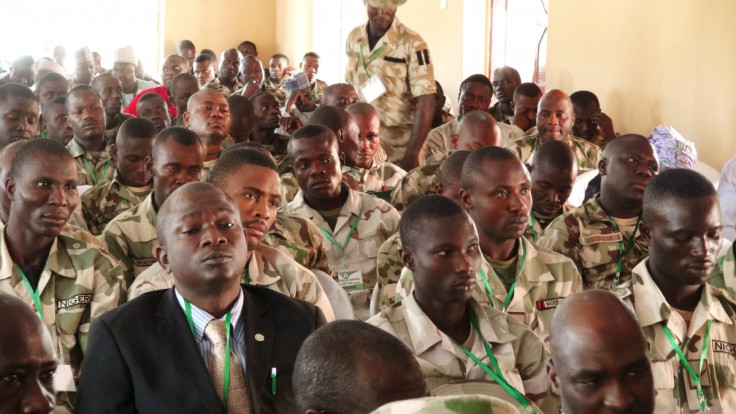Nigeria: More than 350 killed and buried in mass graves by army says Amnesty

The Nigerian military "unlawfully" killed more than 350 men, women and children in Zaria and buried them in mass graves in Mando area near the city of Kaduna, according to an Amnesty International report. Accusing the army of cover-up, the Amnesty report says the Kaduna State authorities recently admitted that they had buried about 347 bodies in a mass grave two days after the killing.
The massacre took place between 12 December, 2015, and 14 December, 2015. Those killed belonged to a Shi'ite Muslim minority group in Nigeria, believed to be supporters of the Islamic Movement in Nigeria (IMN), according to the Amnesty report, which claims that the actual death toll is higher than what has been officially admitted as "hundreds of IMN protesters reported missing since the incident remain unaccounted for".
On the afternoon of 12 December, 2015, hundreds of IMN supporters, some carrying batons, knives and machetes, blocked a section of Sokoto road in front of the IMN headquarters in Zaria, obstructing the convoy of the Chief of Army Staff.
The IMN headquarters is a religious-cultural centre, referred to as Hussainiya by the locals. IMN supporters claimed their gathering was for a religious purpose and they feared the military presence would lead to killings, similar to a past incident where some 30 IMN supporters lost their lives.
The Nigerian army claims that IMN supporters attacked the convoy with the intention of assassinating the army chief, and that the soldiers opened fire in self-defence. The military has also alleged that IMN supporters killed a soldier and left others injured during the clashes. However, the Amnesty report questions the claims, citing video evidence and eyewitness accounts.
The report quotes IMN spokesman Ibrahim Musa as saying that IMN members did refuse to clear the road for the military convoy and that some of their members carried machetes and catapults, but they did not have petrol bombs nor did they assault military officers.
The report quotes a young man named Yusuf. He told Amnesty investigators that he was shot and seriously wounded during the 12 December incident, but managed to escape. He recounted that the badly injured who could not escape were burned alive. "I managed to get away from the fire by crawling on my knees until I reached a nearby house where I was able to hide until the following day. I don't know how many of the wounded were burned to death. Tens and tens of them. There was also a room full of dead bodies and more dead bodies in the courtyard. They too were burned in the fire," the man was quoted as saying.
The Amnesty report questions the video footage provided to them by the Nigerian military as it does not have the "crucial moments" of the clashes, while the video recording posted by IMN members on social media sites "shows protesters scattering as shots are heard and bodies of unarmed civilians on the ground around the Hussainiya".
"Crucially, the army has provided no information (video or other) about its operations during the following 36 hours at the Hussainiya and two other locations in the city where IMN supporters were killed and injured, most notably around Ibrahim Al-Zakzaky's compound in the Gyallesu neighbourhood, where more than 100 people were reportedly killed," the Amnesty report states.
The report cites an eyewitness, who saw a large number of bodies outside a hospital mortuary on the evening of 14 December, 2015. "It was dark and from far I could only see a big mound but when I got closer I saw it was a huge pile of corpses on top of each other. I have never seen so many dead bodies," the person told Amnesty researchers.
Another witness told them that he saw five or six large trucks and several smaller military vehicles at the site of the suspected mass grave in the Mando area on the night of 14 or 15 December 2015. "They spent hours digging and unloading the trucks' cargo into the hole they dug and then covered it again with the earth they had dug out. They were there from about 1 or 2 am until about 5 am. I don't know what they buried. It looked like bodies, but I could not get near. It must be something dangerous to do this at night," the man added.
Satellite images of the suspected mass grave site obtained by Amnesty "reveal an area of disturbed land of approximately 1000 square metre", the report states, noting that the images show that the disturbance to the site occurred between 2 November, 2015 and 24 December, 2015.
© Copyright IBTimes 2025. All rights reserved.





















